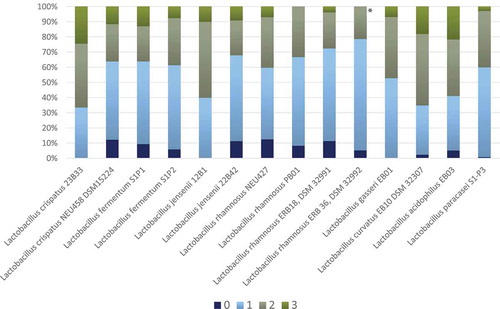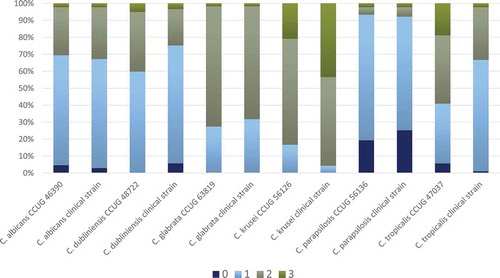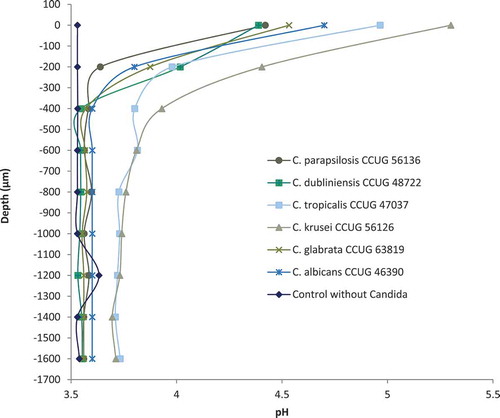Figures & data
Table 1. List of Lactobacillus spp. and Candida spp. used in the study
Figure 1. Frequency distribution (%) of growth inhibition score 0–3 for each Lactobacillus spp. (all concentrations and all Candida spp.). Results are based on duplicate assays, repeated at three separate occasions

Figure 2. Frequency distribution (%) of growth inhibition score 0–3 for each Candida spp. based on agar overlay interference tests with all 14 Lactobacillus spp. (all concentrations). Results are based on duplicate assays, repeated at three separate occasions

Figure 3. Micro-sensor measurement of pH with selected Candida strains with L. rhamnosus DSM 32992 (107 CFU/mL) in the bottom agar layer of the co-cultured agar overlay assay. Zero on the vertical axis represents the first measurement from the sensor of either a Candida colony or agar. No changes in pH values appeared for any of the strains at deeper levels in the agar

